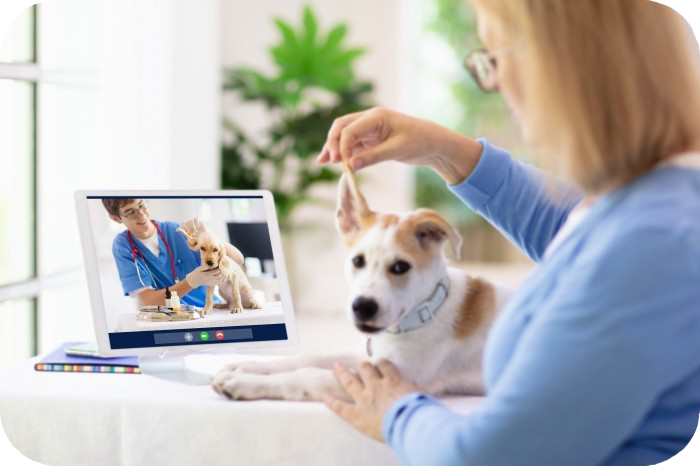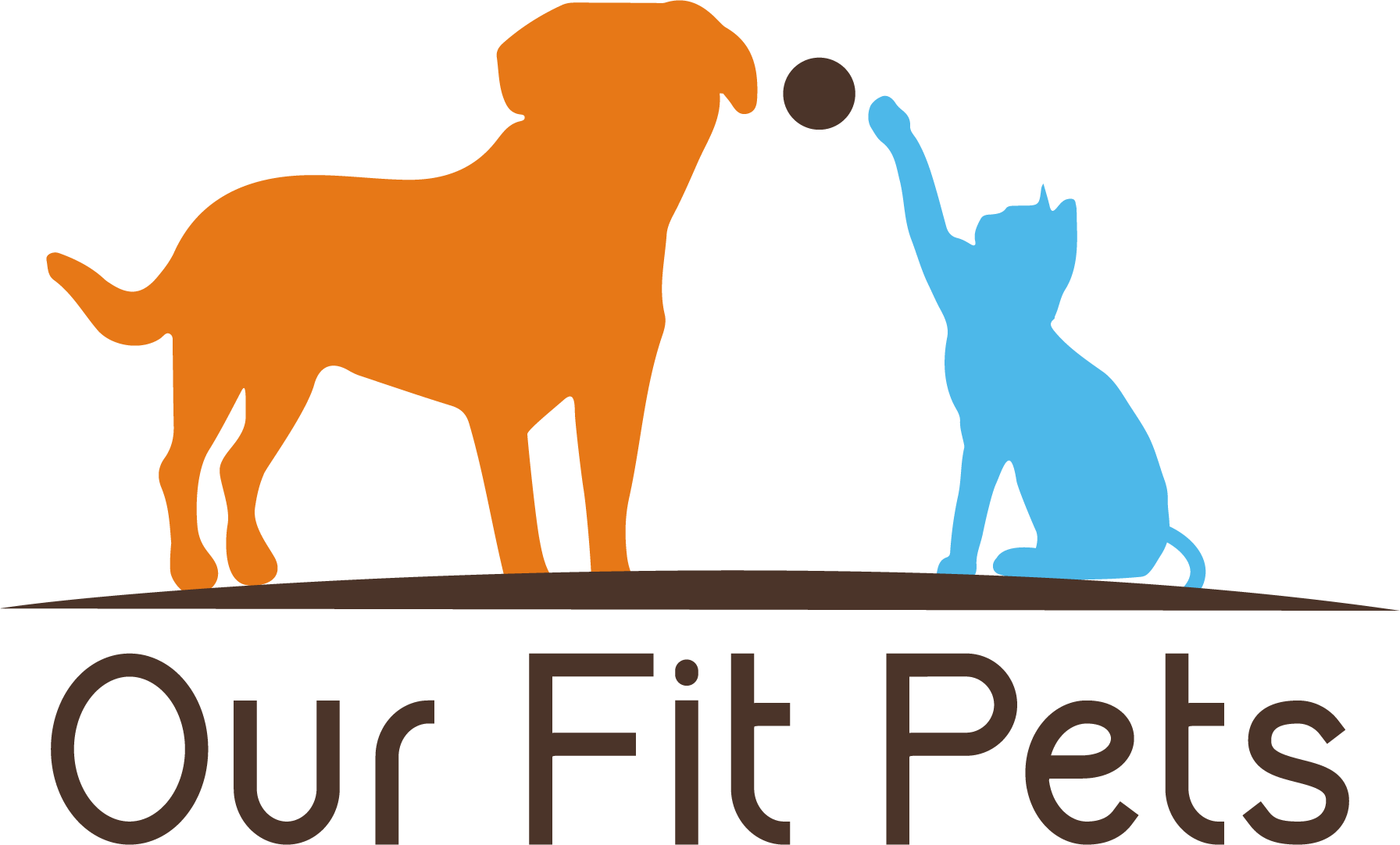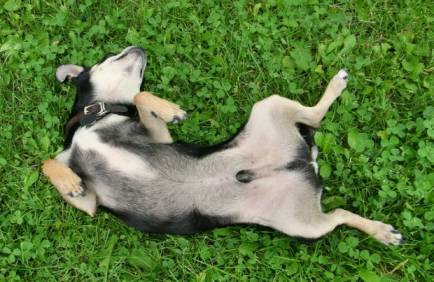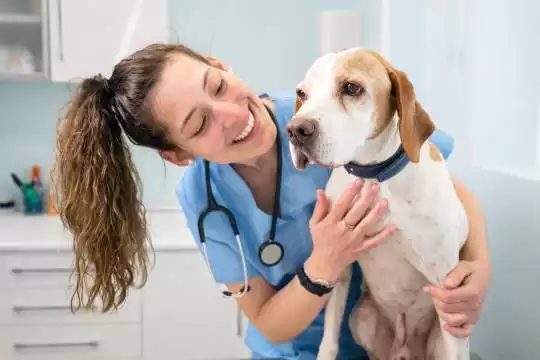Connect with a verified veterinarian in minutes. Licensed vets are available 24/7 to answer your questions. No need to worry about your furry family member.
Of all the things you may have wondered in the world, have you ever wondered if your dog has a belly button? If you haven’t asked this question, you may have an inquisitive child who will or has asked a similar question!
As humans, we tend to believe we’re extremely unique in the world. The fact of the matter is that while we may be unique in some ways, in most ways we’re the same as many other mammals on the planet. So, do dogs have belly buttons? Read on to find out!
What is a Belly Button?
Many mammals, but not all (we’ll talk about that shortly), have a belly button. Our dogs are one of the mammals, including us, that have a belly button! OK, so what is a belly button?
A belly button is where the umbilical cord was attached before birth. The umbilical cord is vital to most mammals before they’re born; the cord carries blood, nutrients and oxygen to the baby from the mother, and removes waste products, too.
Gestation is a time of significant change for the baby, as the cells of the baby start to differentiate into specific organs and tissues. One of these changes is the development of a new belly button.
Back to the statement that “many mammals” have umbilical cords. While it’s true that many mammals bear this scar, there are others that don’t. Dogs, humans and other mammals that have umbilical cords are called “placentals.” This means we are not the only mammal in this category that stay in a placenta (birth sac) until we’re born. There are two other categories of mammals who do not have placentas. These are the monotremes and marsupials.
Placental mammals, including dogs, are mammals that have an embryo develop in a sac called a placenta. Placental mammals give birth to live young. Monotremes and marsupials are mammals that give birth to live young, but these young don’t develop in the uterus or the mother’s placenta; instead, they are born outside of the mother’s womb and grow inside a sac called a pouch.
A monotreme is a type of mammal that is a bit more primitive. It’s young are hatched from eggs. Most monotremes now live in Australia. In fact, you may be familiar with one of them—the platypus!
Marsupials have young that are born before they’re completely developed. After they’re born, marsupial babies will crawl into their mother’s pouch, where the mother will suckle and carry them. We know you’re very familiar with a large marsupial in Australia—the kangaroo! But did you know there’s also a marsupial in North America? It’s the opossum! There are actually several varieties of opossum, but they’re all marsupials.
Neither the monotremes nor marsupials have a belly button. Belly buttons are only found on mammals who carry their young in a placenta before birth.
In addition, belly buttons can be divided into innies and outies. Innies are where the umbilical cord is connected to the placenta, and outies are where the umbilical cord exits the body. Most mammals have innies, but there are exceptions.
Human belly buttons are typically innies, but sometimes outies. It all depends on where the cord was attached during birth. A small percentage of human babies are born with umbilical cords that exit the body and are not connected to the placenta, or the placenta is removed before birth.
OK—that’s enough of the human navels and the biology lesson! We just thought it was interesting! Now, back to our dogs’ belly buttons!
Is It Normal for a Dog to Have a Belly Button?
The quick answer is a resounding yes! However, after the puppies are born, the mother dog then bites off the umbilical cord.
Then a small stump will remain on the puppy’s belly; however, as it heals, the stump will eventually come off and the belly button forms. The belly button is the scar where the umbilical cord was attached before the puppy’s birth. This works the same for us, so our dogs have belly buttons just like us!
The one difference between you and your dog’s umbilical cords is that human umbilical cords are more complex and larger. That’s why we have the more pronounced scar. But for dogs, their umbilical cords are smaller, and so don’t leave a large vertical scar behind. In fact, you may find it challenging to even find your dog’s belly button.

Review symptoms, medications & behavior to keep your pets healthy with a Vet Online in just minutes.
Ask a Vet Live NowWhat Does a Dog’s Belly Button Look Like?
Some people aren’t aware that their dogs do have belly buttons. The reason is that a dog’s belly button isn’t really noticeable. Remember, a puppy’s umbilical cord is smaller and lighter than a human’s, so not much of a scar remains after the belly button heals.
Where is a Dog’s Belly Buttons?
In fact, a dog’s navel (or belly button) is on his stomach, near the end of their rib cage. Because a dog’s stomach may have a lot of fur in the area, the belly button scar tissue may be difficult to find. On some dogs, there may a small scar that is smooth, round and sits a little above the rest of the skin. However, in many dogs, the flat scar is barely noticeable.
To find your canine companion’s belly button, just go to the end of his rib cage. You may have noticed a small swirl or tuft of fur—this is where the belly button can be found. If your fur baby has a lot of fur, you may need to part his hair to see if there’s a slight belly button there. A beagle’s belly button is not always easily found, but it can be found by running your fingers through his fur. Basenjis and some other breeds also have a belly button that is not easily seen. The wrinkles in the belly of these dogs may cover the belly button.
A lint roller may be used to see if your dog has a belly button. You can also use a soft cloth to gently rub over the area and check for a belly button. If you can’t find one, you can always ask your vet for help in finding it.
Why Do Dogs Love Belly Rubs?
Dog owners may notice that belly rubs are a popular way to connect with their dog. Rubbing on the belly is called “tummy time” and is often a favorite pastime for dogs. Dogs love belly rubs, and will often try to get you to rub them there when they’re excited.
Some dogs may get belly rubs because they like them, but others may get them to help with a medical condition. Dogs with a stomach ulcer may need belly rubs to help their body heal and reduce the pain. It’s important to talk to your veterinarian about your dog’s medical needs and how you can help him feel better.
Puppy Umbilical Cord Problems
Most of the time, a puppy belly button heals with no problem. Only that small, flat, circular scar will remain. However, occasionally a puppy may develop an umbilical hernia. The problem may be noticeable when you pet them, or the vet may find the issue during a physical exam of the puppy.
What is an Umbilical Hernia in a Puppy?
An umbilical hernia forms when organs, the abdominal lining, or fatty tissues in the abdomen protrude through a weak spot in the connective tissue or even through a muscle. You or the vet may notice a bugle that points outward from the puppy’s abdomen. The protrusion, or bump, is found just below the puppy’s ribcage.
An umbilical hernia can be caused when the umbilical ring doesn’t completely close after birth. There will be a noticeable bump on the puppy’s abdomen, which may protrude more when the puppy is standing, barking, crying or straining. This type of hernia is either non-reducible or reducible. A reducible hernia is one where the protrusion can be pushed back into the abdomen. Non-reducible hernias can’t be pushed back in; this may be because of an obstruction or adhesion of the hernia to the opening.
The umbilical hernia can vary in size—from less than ¼” to more than an inch. While smaller hernias may close on their own, the larger ones usually require surgery. The good news is that this condition is usually painless for the puppy. And most of the time, the puppy’s health will not be affected.
However, in very rare cases, part of the intestines (or other tissues) can be trapped, causing strangulation of the blood flow (meaning the blood flow’s cut off), which can lead to death. This type of hernia needs to be treated quickly and is a medical emergency.
Some dog breeds have a higher chance of developing an umbilical hernia including:
- Australian Cattle Dog
- Basset Hound
- Bull Terrier
- Cairn Terrier
- Cocker Spaniels
- Collies
- Dachshunds
- English Spring Spaniels
- Lhasa Apso
- Maltese
- Miniature Pinscher
- Pekinese
- Pomeranian
- West Highland Terrier
Symptoms of an umbilical hernia
A soft lump at the belly button site
A lump that grows larger over time
The lump feels warmer than surrounding skin
The puppy begins to show signs he’s in pain, especially when the area’s touched. This can happen when the hernia becomes larger.
If the puppy has developed a strangulated hernia, you may notice these symptoms:
- Excessive swelling of the hernia
- Fever
- Severe pain that is quite obvious
- Lethargy
- Vomiting after eating
- Refusing to eat
- Abscess forms at the umbilical site
If this condition is left untreated, the puppy could develop kidney and/or liver failure due to the infection spreading throughout his body. Death will occur in 24 to 48 hours if this is not treated in time.
Can an Umbilical Hernia Heal on Its Own?
Yes, this is possible; however, a puppy with a hernia should always be evaluated by a vet. A hernia can heal on its own if:
- If the hernia is less than 1 cm in size, it can heal by the time a puppy reaches 4 months of age.
- Hernias that have not closed by this time will need to be treated surgically. The surgery involves gently pushing the protrusion back through the opening, and then sewing the hole closed. The surgery can be done at the same time a puppy is spayed or neutered.
- So, if your fur baby has an umbilical hernia, it’s very important to get him to the vet as soon as possible to be checked. Nothing can fix the hernia if it is a strangulated hernia, except surgery. Your puppy’s life depends on quick treatment for this very serious condition.
With proper treatment, the prognosis is excellent for puppies, including those who need surgery. In most cases, the puppy will not have this condition again, and the puppy usually will not suffer complications.
One More Problem with Puppy’s Umbilical Cord Site
In most cases, the mother dog will remove the umbilical cord from her puppies after each one is born. She does this by chewing the umbilical cord off. Most of the time, the area heals up very quickly and doesn’t require further attention. However, an infection can sometimes develop in a puppy’s umbilical cord site.
The infection may develop due to the momma dog over-cleaning the site. The mother dog may accidentally chew the umbilical cord right down to the skin, or possibly through the skin, which allows the intestine to come out.
If an infection develops at the site, it can lead directly to the puppy’s blood stream. The infection can then travel from the belly button to the rest of the body and even lead to death.
To keep this from happening, you should ask the vet how to treat the umbilical site. Some vets recommend using Triodine 7 (iodine) or Vetericyn Super 7 Ultra Naval. These medications cause the umbilicus (the umbilical stump) to dry up and heal quickly. This can prevent infections, hernias and other problems.
If a momma dog tends to over-clean, then one solution is to use a nylon umbilical clamp after the puppies are born. This keeps the momma dog from chewing the umbilical cord down too far. And if the momma dog has chewed through the puppy’s skin, and the intestines are showing, then the puppy will need have the wound sutured.
With proper treatment and care, these types of umbilical issues can be fixed and the puppies will go on to live long, happy lives!
So, there you have it! All the information you may have wanted about dogs’ belly buttons! Your fur baby probably does have a belly button, which is not easily found. Even so, most dogs do have them, just like us!
Connect with a verified veterinarian in minutes. Licensed vets are available 24/7 to answer your questions. No need to worry about your furry family member.

Julie
Julie is a graduate of the University of North Carolina, Wilmington, where she studied Animal science. Though contrary to the opinion of her parents she was meant to study pharmacy, but she was in love with animals especially cats. Julie currently works in an animal research institute (NGO) in California and loves spending quality time with her little cat. She has the passion for making research about animals, how they survive, their way of life among others and publishes it. Julie is also happily married with two kids.
Review symptoms, medications & behavior to keep your pets healthy with a Vet Online in just minutes.
Ask a Vet Live Now

